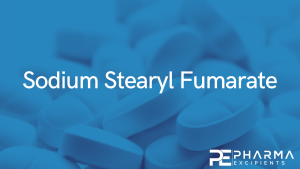The Current States, Challenges, Ongoing Efforts, and Future Perspectives of Pharmaceutical Excipients in Pediatric Patients in Each Country and Region

A major hurdle in pediatric formulation development is the lack of safety and toxicity data on some of the commonly used excipients. While the maximum oral safe dose for several kinds of excipients is known in the adult population, the doses in pediatric patients, including preterm neonates, are not established yet due to the lack of evidence-based data. This paper consists of four parts: (1) country-specific perspectives in different parts of the world (current state, challenges in excipients, and ongoing efforts) for ensuring the use of safe excipients, (2) comparing and contrasting the country-specific perspectives, (3) past and ongoing collaborative efforts, and (4) future perspectives on excipients for pediatric formulation. The regulatory process for pharmaceutical excipients has been developed.
However, there are gaps between each region where a lack of information and an insufficient regulation process was found. Ongoing efforts include raising issues on excipient exposure, building a region-specific database, and improving excipient regulation; however, there is a lack of evidence-based information on safety for the pediatric population. More progress on clear safety limits, quantitative information on excipients of concern in the pediatric population, and international harmonization of excipients’ regulatory processes for the pediatric population are required.
Introduction
Pediatric patients have different requirements compared to adults, regarding pharmacotherapy [1]. Flexible dosing, appropriate excipients, ease of administration, and dosage form acceptability or palatability are some of the key parameters for developing formulations appropriate for different age groups of the pediatric subset [2]. Pharmaceutical excipients are no longer considered inert in general, as new evidence suggests that there may be safety concerns with some excipients when used in products for the pediatric population, especially with younger age groups [3]. For example, immaturity of the metabolic and clearance functions, in neonates and infants, can lead to the toxicity of excipients such as propylene glycol [4,5], benzoic acid, and benzoates [6].
These excipients should, hence, be used with caution in noticeably young patients, such as preterm neonates. Paraben-containing drugs, injectable saline, and water for injections should be contraindicated in jaundiced newborn infants when the high-affinity albumin-binding sites approach saturation [7,8]. The use of benzalkonium chloride in the pediatric population has been reported to cause dose-related bronchoconstriction, especially in pediatrics who have asthmatic conditions, and has been related to the precipitation of respiratory arrest [9]. Ethanol, which is used as a solvent or a preservative agent in oral liquid preparations, has severe acute and chronic adverse effects in the pediatric population [10]. Flavoring agents may be used to impart taste, improve palatability, and thus, improve medication adherence. They are used in comparatively small amounts so that exposure is relatively low. However, there are safety concerns associated with flavoring substances, with respect to the potential risk of genotoxicity, allergy, and sensitization [11]. There are safety and biopharmaceutical challenges, of commonly-found excipients, in pediatric formulations [12,13,14].
Many excipients have no available safety data to justify their use during regulatory approval of the pediatric drug products. While the maximum oral safe dose for several kinds of excipients is known in the adult population [15,16], the acceptable excipient levels in pediatric patients (including preterm neonates) have not been established yet, due to the lack of evidence-based data [5,6]. Furthermore, the guidance or recommendation on excipient use for the pediatric population varies between countries around the world.
This article summarizes country-specific perspectives, including (1) the current state on the safety assessment of pharmaceutical excipients, in formulations for both adults and pediatrics (including the disclosure status of the excipients in the prescribed drugs) and challenges in excipient regulation; (2) ongoing efforts for ensuring the safety of excipients, for the pediatric population, through the pediatric drug development in Africa, Australia, Canada, China, Europe, Japan, and the United State of America (US). Additionally, country-specific perspectives were compared, and aspects of past and ongoing collaborative efforts on excipients used for the pediatric population are presented (Figure 1).
Download the full article as PDF here: The Current States, Challenges, Ongoing Efforts, and Future Perspectives of Pharmaceutical Excipients in Pediatric Patients in Each Country and Region
or read it here
Saito J, Agrawal A, Patravale V, Pandya A, Orubu S, Zhao M, Andrews GP, Petit-Turcotte C, Landry H, Croker A, Nakamura H, Yamatani A, Salunke S. The Current States, Challenges, Ongoing Efforts, and Future Perspectives of Pharmaceutical Excipients in Pediatric Patients in Each Country and Region. Children (Basel). 2022 Mar 23;9(4):453. doi: 10.3390/children9040453. PMID: 35455497; PMCID: PMC9026161.
Read more on Sodium Stearyl Fumarate as a pharmaceutical excipient here:


